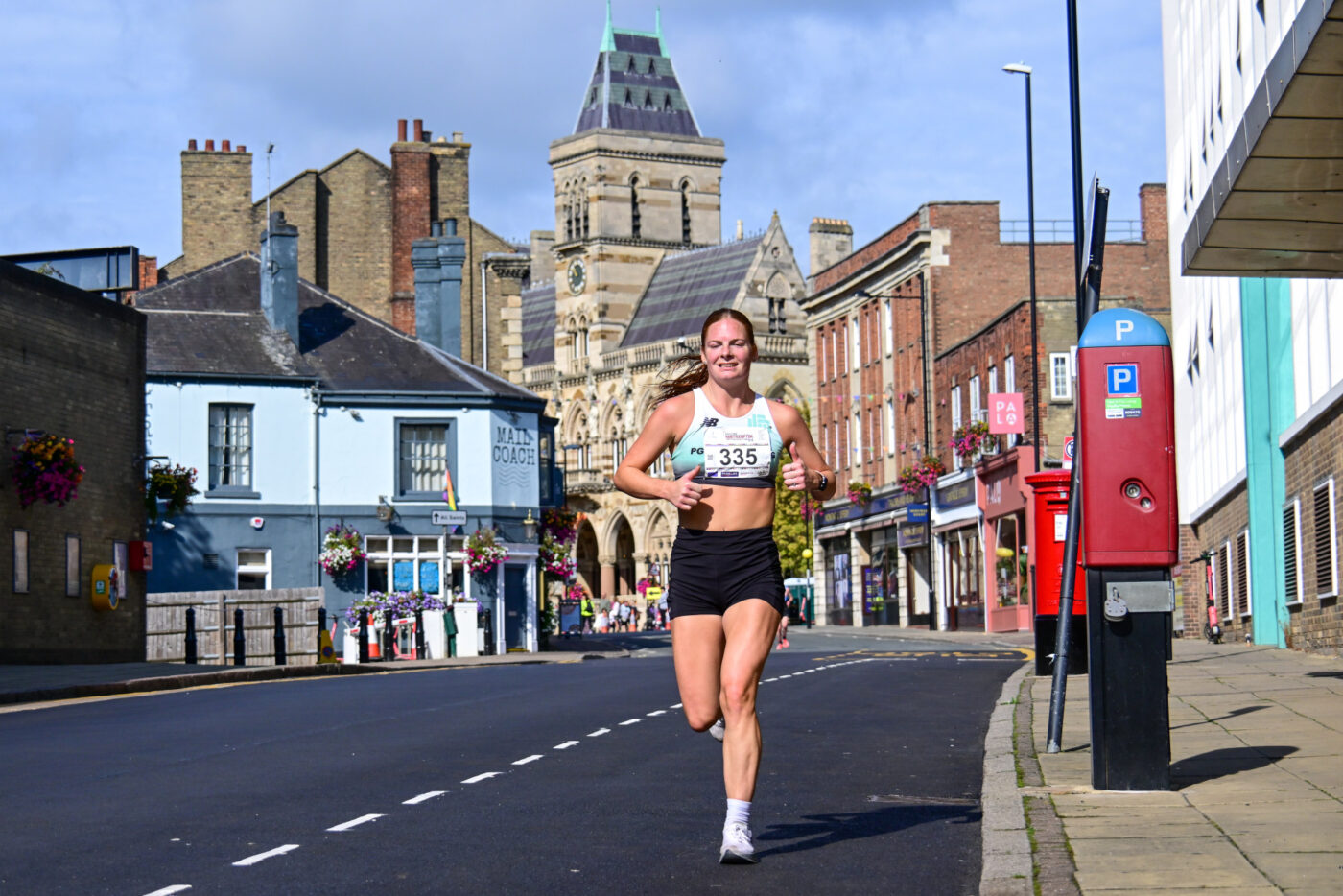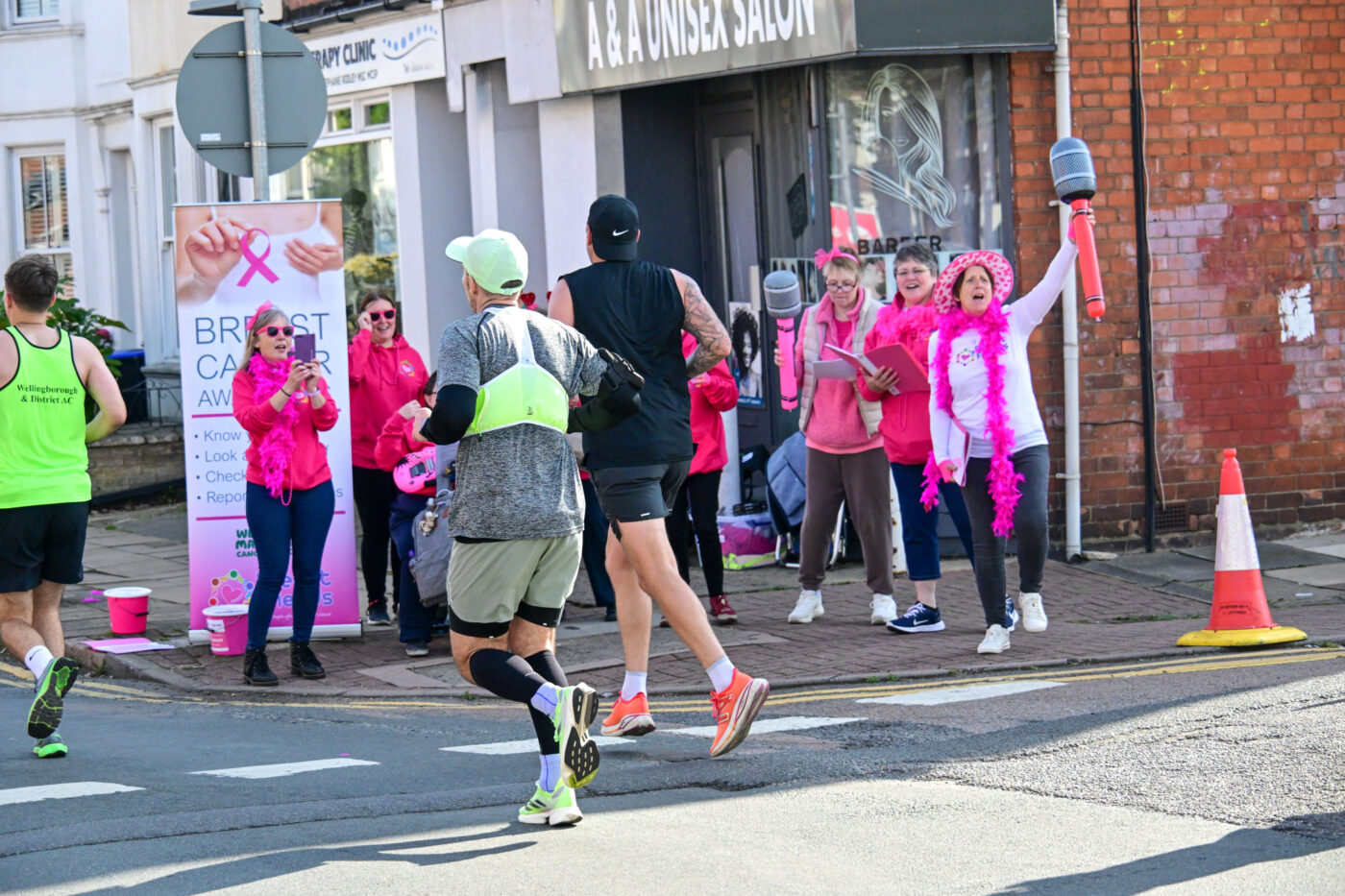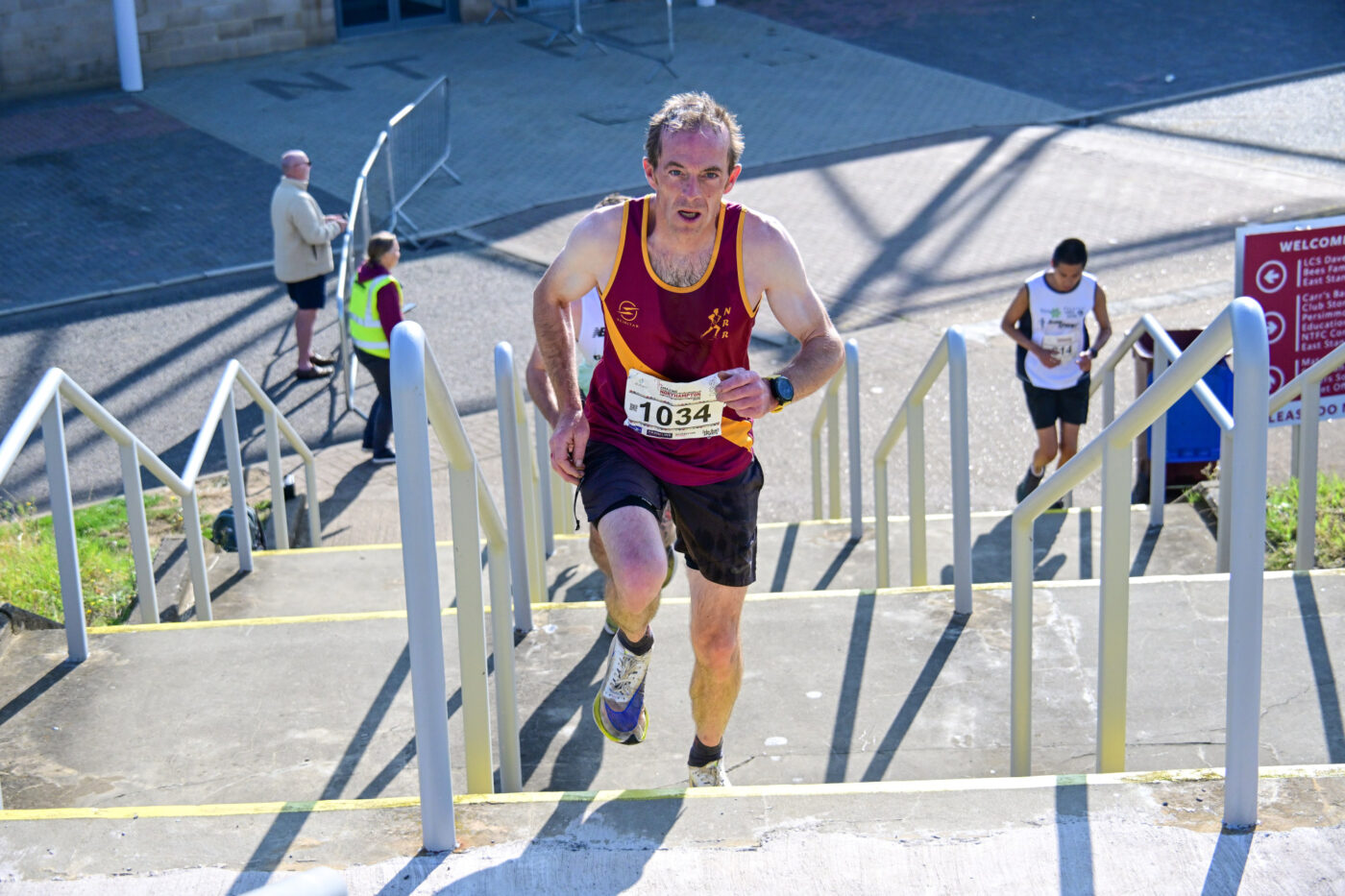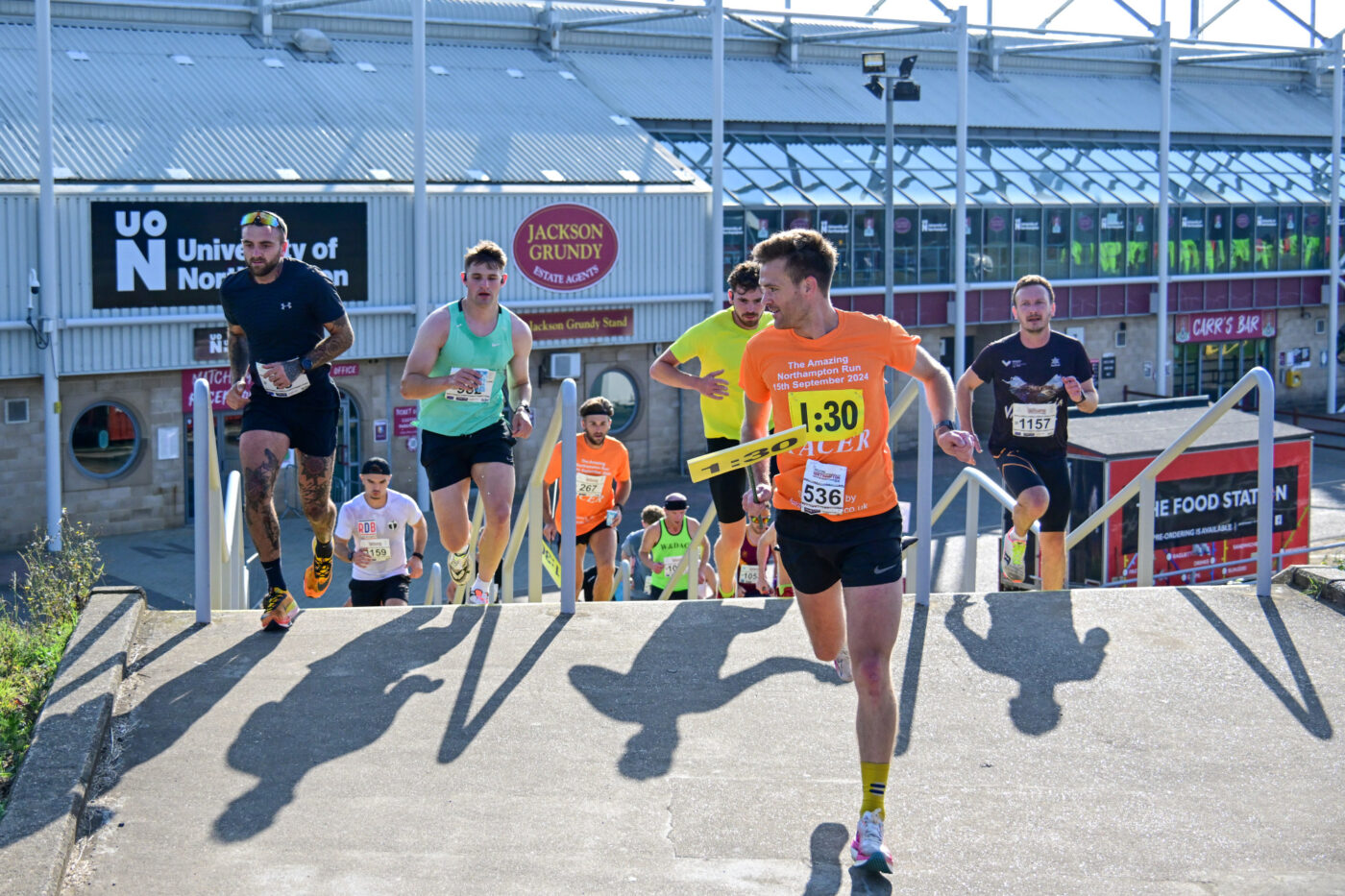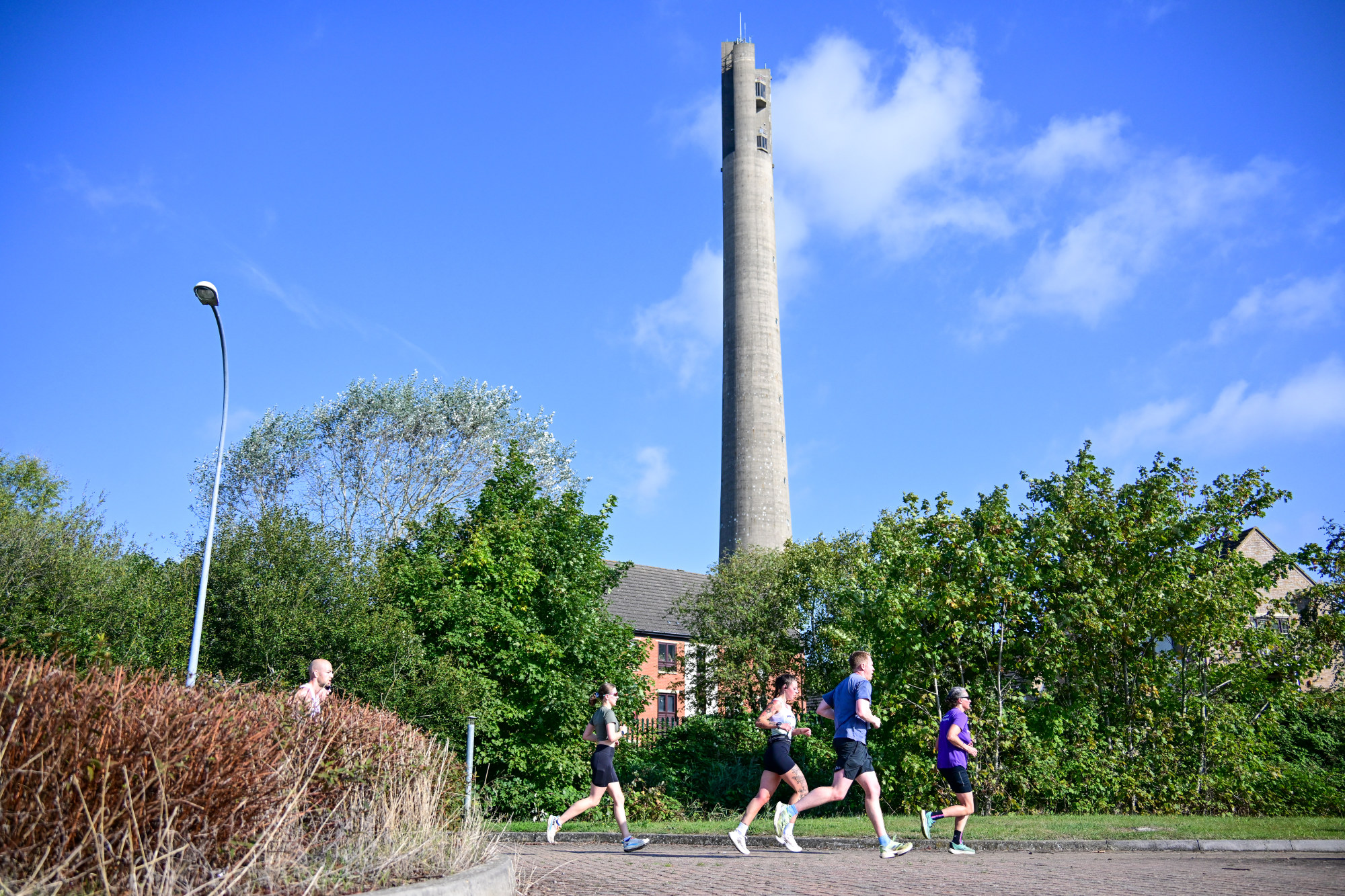
28 Jul Take an amazing run through Northampton with us…
Our flagship half-marathon, The Amazing Northampton Run, returns on Sunday, September 14 and will be celebrating not only some of the town’s most popular sites but a few of the less well-known ones too.
On top of landmarks like the Guildhall, All Saints’ Church and the Market Square, we’ll be celebrating the history and heritage of lesser known spots such as…
- The Cemetery of the Sisters of Notre Dame, where nuns who taught at the former convent school are buried
- Phipps Brewery, where they have been brewing for over 200 years
- The Church restaurant dating back to 1138
- The Racecourse, which performed the role its name suggests until 1904
- Beckets Park, named after Thomas a Becket who drank from a well there in 1164
Another place our runners will pass is the pretty St Giles’s Church, which contains the grave of no less a man than ‘The Father of the Pilgrims’ Robert Browne.
Browne’s acolytes famously set sail on The Mayflower in 1620, leaving England for the New World.
Known as the Pilgrims, they settled in America and their ship has become a cultural icon in that country’s history. Browne himself was born in Rutland and became the standard bearer for separatists wishing to separate from the Church of England.
He later returned to the Church of England and became a priest in Thorpe Achurch in Northamptonshire from 1591 until 1631.
Over his lifetime, he was imprisoned 32 times for his non-conformist beliefs and eventually died in jail in Northampton – after being arrested for hitting a constable.
He was buried in St Giles’s Church, where a memorial commemorates his fascinating life.
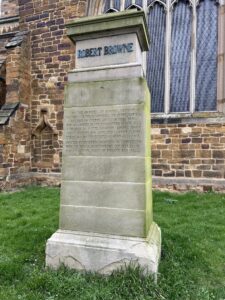

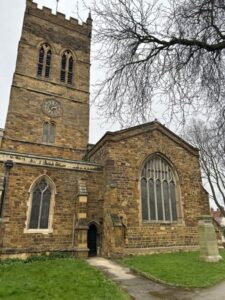
Northampton has also been the home of a number of famous faces, seven of whom are celebrated in the courtyard of Northampton’s beautiful Guildhall, which runners will pass during The Amazing Northampton Run.
If you’ve not visited the courtyard previously, the seven statues depict:
FRANCIS CRICK: Born in Weston Favell, Crick was a renowned molecular biologist and physicist, most famous for co-discovering the DNA molecule. He was awarded the Nobel Prize in Physiology or Medicine.
SIR MALCOLM ARNOLD: The composer worked across a host of musical genres, producing nine symphonies, numerous concertos, concert works, chamber music, choral music and music for brass band and wind band. His film scores included The Bridge on the River Kwai, for which he won an Oscar.
EDGAR MOBBS: The Northampton Saints captain for five years, Mobbs represented England at Rugby Union. After being turned down as too old to join the army in the First World War, he raised his own sportsman’s company, the Mobbs’ Own. He rose to command his battalion, but was killed in action in July 1917.
JOHN CLARE: Northamptonshire’s peasant poet was the son of a farm labourer who found fame for his depictions of the English countryside. In 1841, he was committed to Northampton General Lunatic Asylum – now St Andrew’s Hospital.
WALTER TULL: Only the third person of mixed-race heritage to play in the top flight of English football, appearing for Tottenham Hotspur in 1909, Tull later joined Northampton Town. During the First World War, he was the first mixed-heritage man to be commissioned as an officer and would have received a Military Cross but for the fact black soldiers were not allowed to. He was killed in action in 1918.
LADY WANTAGE: One of the wealthiest women of her time, Harriet Sarah Jones-Lloyd was a well-known art collector and benefactor who set up the National Aid Society, a forerunner of the British Red Cross.
MARGARET BONDFIELD: A prominent female figure In British politics, she became Northampton’s first female MP (Labour), representing the town in Parliament from 1923 to 1924. Margaret later made history when she became the UK’s first female Cabinet Minister in 1929.
All this – and running too! Ready to sign-up? You can book your place at www.theamazingnorthamptonrun.co.uk
